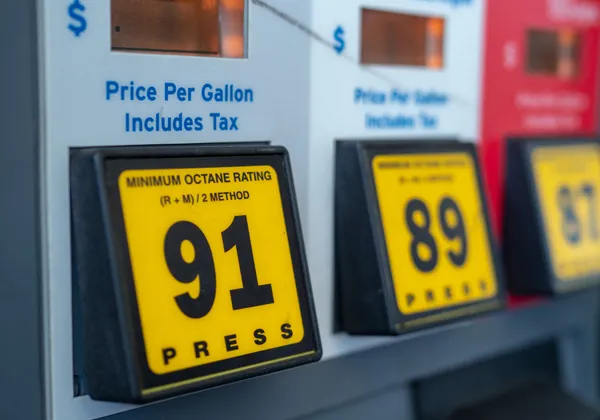When you fill up your vehicle, you’ll notice different grades of gasoline available at the pump, each labeled with an octane rating. Regular unleaded gasoline typically has an octane rating of 87. But what does this number mean, and how does it affect your vehicle’s performance?
Let’s explore the concept of octane ratings, focusing on regular unleaded gasoline, to provide a clear and simple understanding.
What is an Octane Rating?
An octane rating measures a fuel’s ability to resist “knocking” or “pinging” during combustion. These knocking sounds occur when the air-fuel mixture in your engine detonates prematurely, causing inefficient combustion. Higher octane numbers indicate greater fuel stability and resistance to knocking.
Grades of Gasoline and Their Octane Ratings
In the United States, gasoline stations typically offer three main grades of gasoline, each with different octane levels:
Regular (87 Octane): This is the standard fuel suitable for most vehicles.
Midgrade (89–90 Octane): This fuel offers a balance between performance and cost.
Premium (91–94 Octane): Designed for high-performance engines requiring higher compression ratios.
These octane ratings are determined by averaging two methods: the Research Octane Number (RON) and the Motor Octane Number (MON). The formula (R+M)/2 represents this average, providing a standard measure for consumers.
Importance of Using the Recommended Octane Fuel
Using the octane grade recommended by your vehicle’s manufacturer is crucial for optimal performance. Most cars are designed to run on 87 octane regular gasoline. Using a higher octane fuel than required does not necessarily improve performance or fuel economy under normal driving conditions.
However, for engines with high compression ratios, turbocharging, or supercharging, higher octane fuels are necessary to prevent knocking and ensure efficient operation.
Consequences of Using Lower Octane Fuel Than Recommended
If your vehicle requires a higher octane fuel and you use regular 87 octane gasoline, you might experience engine knocking. This knocking can lead to reduced performance and, over time, potential engine damage.
Modern engines may adjust by retarding spark timing to prevent damage, but this can result in decreased power and fuel efficiency.
Benefits of Higher Octane Fuels
Higher octane fuels are designed for engines that operate under higher stress, such as those with higher compression ratios or forced induction systems like turbochargers.
Using premium fuel in these engines can prevent knocking, allow for more aggressive engine tuning, and improve performance. However, for most standard engines, using premium fuel does not provide significant benefits and is an unnecessary expense.
Misconceptions About Octane Ratings
A common misconception is that higher octane fuels are more potent or provide more energy. In reality, octane ratings measure a fuel’s resistance to knocking, not its energy content. Therefore, using a higher octane fuel than your engine requires does not enhance performance or fuel economy.
Regional Variations in Octane Ratings
Octane ratings can vary by region due to environmental regulations and altitude considerations. For example, in high-elevation areas, gasoline with an 85 octane rating is available and suitable for most vehicles. It’s essential to use the octane grade appropriate for your specific location and vehicle requirements.
The Role of Ethanol in Gasoline
Many gasoline blends contain ethanol, which is added to boost octane levels and reduce carbon emissions. Ethanol has a high octane rating of about 109. Most gasoline in the U.S. contains up to 10% ethanol, known as E10. Some regions offer blends with higher ethanol content, such as E15, which are compatible with many modern vehicles.
Conclusion
Understanding octane ratings helps you make informed decisions about the fuel you use, ensuring your vehicle operates efficiently and remains in good condition. Regular unleaded gasoline with an 87 octane rating is suitable for most vehicles.
Always refer to your vehicle’s owner manual to determine the appropriate octane grade for your engine. Using the recommended fuel type supports engine longevity, optimal performance, and fuel economy.
Related Topics:

